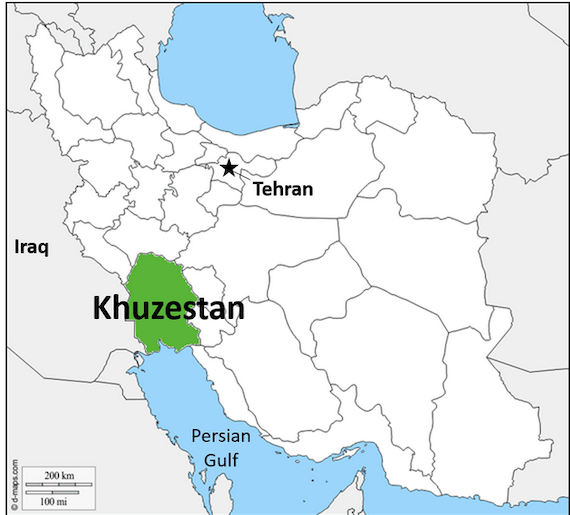Ann Arbor (Informed Comment) – Iran International reports that a temperature of 126 degrees F. (52.2C) has been recorded in Abadan. It is the highest temperature officially recorded in that city in the 70 years official records have been kept. Globally, it is one of the the higher temperatures observed before the summer solstice since records began being kept in the 19th century.
Government offices were closed in the province of Khuzestan on Tuesday as a result of the heat.
When we talk about the climate crisis, we sometimes only attend to dramatic natural disasters. But it just getting too hot for government to work is also a threat to well-being.
Nearly 5 million residents live in this southwestern province, out of roughly 84 million Iranians.
Scientists believe that where the temperature exceeds 122F, and where humidity is 50% or more, human beings cannot survive outside in it. Luckily for the people of Abadan, the humidity nowadays seems to be about 18%.
There is a possibility of high winds and dust storms early next week.
Kuwait and Iraq also suffered from unusually high temperatures this week, and from extreme dryness. In Southwestern Iran, in Kuwait and Iraq, rainfall has been 50% less than usual this spring. Iraq has suffered from repeated and long-lasting dust storms of a sort not seen before.

h/t USIP Iran Primer.
Iran International notes that Iran is in the grip of a decade-long drought, and that the local Dez river, a tributary of the Karun River, has fallen to alarming levels. Farmers are turning to underwater aquifers, but draining them is risky, since they may not be filled again, and taking this water out is causing widespread subsidence, i.e. Iran is sinking. Hydroelectric dams are producing much less energy.
Abadan has been the scene this spring of substantial political unrest, with protests over a building collapse blamed by locals on corruption. The Iranian government replied to the protests with a severe crackdown.
Last November, the drying up of the Zayandeh Rud river that flows through Isfahan provoked large demonstrations by locals.
WION: “Drought threatens Iran’s iconic river as climate crisis affects daily lives | World English New”

The climate emergency is causing Iran to be drier over time. Scientists project that precipitation in Iran will decrease by 35% over the next few decades and the average temperature will increase by an alarming 4.68° F. (2.6 °C.) Some areas of Iran may become uninhabitable because of the heat. Khuzestan, the province of which Abadan is the capital, also saw widespread water shortages and consequent street protests last summer.
Ironically, Abadan is a major oil-producing region, so its major product is implicated in making it increasingly unlivable.



 © 2025 All Rights Reserved
© 2025 All Rights Reserved